The Cryptids of the ocean
The Giant squid
As an enthusiast for the element of mystery, the name of this magnificent beast triggers me. The legends of Captain Jack Sparrow and Davy Jones create the image of the monster, cleverly tangling its arms around the boat, its name called throughout the history of pirates. “The Kraken” they state and then they tremble, originated from the Norse sagas. A giant-cephalopod-like creature which is most definitely one of its kind. So what is the truth of this sea monster, and why should we care for another tale of possible fiction?
The exciting truth is that the living embodiment of this cryptid exists as the The Giant Squid, and I assure you despite its fictitious imagery in movies, the giant squid is a real cephalopod dwelling in the deep depths of the ocean’s twilight zone (Mesopelagic).
Scientific name: Arichiteuthus dux
Size range: to 43ft.
Class: Cephalopod
With respect to the essential characteristics of a squid they have a mantle, 8 arms and two tentacles, a funnel, eyes and stabilizing fins.
It has eyes that are 27cm in diameter, almost the largest in the world, beaten by its distant cousin the colossal squid. These eyes can absorb a large amount of light allowing the squid to glimpse the bio-luminescent prey. Oddly instead of vitreous it contains water, after they die the water causes the eyes to collapse like a popped crisps packet.
In its mantle, the squid contains an extremely peculiar doughnut shaped brain with its esophagus running down its middle. Due to it grinding food becomes a priority, hence the mantle also includes a extremely sharp beak and tongue with rows of teeth called a Radula.
The tentacles have razor sharp hooks and extremely powerful suckers, each suction cup two inches in diameter, that can scar numerous sperm whales. each suction cup is surrounded by serrated sharp edges.These tentacles can also regenerate like other squid’s. A powerful funnel to help through respiration and buoyancy. The two stabilizing fins present in most squid’s mantle help in swimming and changing direction.
It is highly intelligent as squids and octopuses are. Moreover, the females are usually taller by 9ft. when compared to males.
The squids are popularly hunted by sperm whales and considered there favorite meal, with up to 4.3 million hunted each year. There are also theories they are cannibals. Squids hunt deep dwelling fish as prey, they sometimes use the help of bio-luminescent jelly fish that signal when attacked by predators, a symbiotic relationship between them.
We humans, tend to lie in order to glorify things, no, a Giant squid cannot come to your ship and attack you despite what all those novels and movies say. Th kraken is sadly imprisoned in the cold dark depths, it can not come by the surface for anyone. If it does it has a high probability of dying due to the intense pressure differences.
So, it remains a secret of the depths…
The Sea Devil
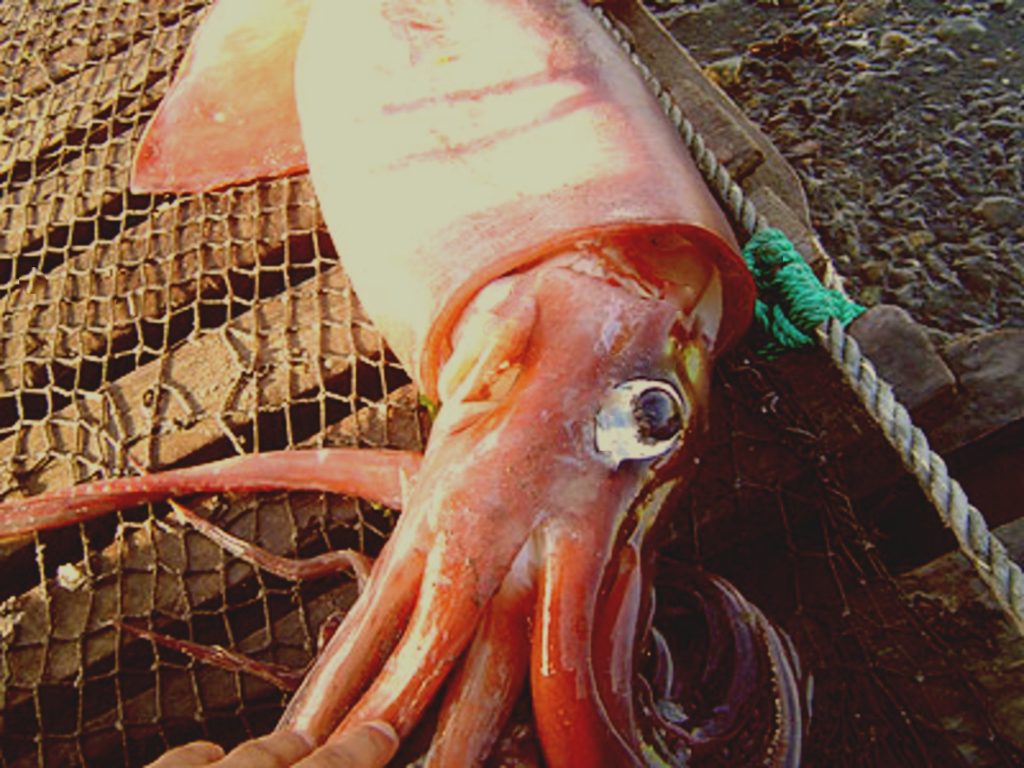
Something out of the ordinary, as if a child had attempted to draw a sea monster and it actually came to life. Its a luring beast. It can be vividly made out from the dangerous and fearsome clenching teeth, aligned like knives to a brilliant blue light just hanging from its head. You might have seen this one lurking the shadowy ocean in ‘Finding Nemo’, the one which gave you a jump-scare.
This is the Deep Sea Anglerfish, quite the modest name. To be precise this is the female Deep Sea Angler fish, the males are nothing compared to this mess’s beauty. There are over 210 species of Angler fish including the Frogfish, Goosefish, Bat-fish and the Deep Sea Angler. My personal favorite is the Ceratiidae or the Sea Devil family.
Yes, that name is quite right.
Scientific name: Ceratiidae
Phylum: Chordata
Class: Actinopterygii
Order: Lophiiphormes
While the females reach to 3.9ft. The males reach to 5.5in. A male angler is rather a lazy parasite. As it matures its digestive system slowly stops functioning, and the males searches for the females. Then they depend on the female for life. the males attach to the females body, around 6 can attach per body. He will take its nutrition from the female and sit back till it’s the female’s time to spawn. This way the male is present for reproduction to occur and he cannot get away from paternity.
The eggs are kept in a 9 meter jelly-like substance. Until these hatch into larave the eggs simply float in the ocean. The larvae then rise to the surface and get nutrition from zooplankton. They would return to their horrid dark homes, the depths as soon as they grow old.
The most exciting feature of this female is the esca. That miniature luminescent bright ball gently hanging in serene harmony, through the dark depths of the midnight zone. This light in addition is also swung back and forth just to increase the hypnotizing temptation and attract prey. As soon as the prey looms near the esca, within a flash, the prey’s death arrives when the Angler’s ferocious jaw snaps. It’s agility is quite remarkable, since the female is the provider for all males, she needs this to catch prey. The esca is even more fascinating because its light is actually a result of a symbiotic relationship. The bacteria present inside the esca are called ‘Photobacterium’, by the movement of the Sea Devil they get nutrients and protection.
It’s funny and tragic how even these fish are considered an ediable delicacy and commercialy fished to Japan. Overfishing is destroying the oceans though I really hope that this magnificent beast stays.
The Japenese Spider Crab
It’s clever how sometimes science fiction mutates two animals and forms another. I remember seeing ‘Spy Kids; The Island of lost dreams’ where the scientist had merged a monkey and a spider. The Japenese Spider crab isn’t as perplexing as the Spider Monkey, although definitely as fearsome.
Scientific Name: Marcrocheira kaempferi
Length: 12 feet (3.7 m)
Phylum: Arthropoda
The oceans near Japan, the twilight zone contains the arthopod with largest leg span, a Spider Crab. The Crapace is only 40 cm (16in) though it is 5.5 meter from claw to claw. They use this massive body for various purposes. Firstly, their exoskeleton serves as a armour that protects them from predators such as octopi.Secondly, they decorate their shell with sponges and other animals for camaflouge. Through camaflouge, Spider crabs protect themselves from predators during their nocturnal hunts. The Spider crab is a scavenger, feeding on plants and dead mass that drift down to the ocean floor.
The female carries the fertillized egg for reproduction till they hatch into primitive larvae. These do not resemble the greatness of the gaint as it is a transparent and legless tiny creature. It rises to the surface and floats there and comes back when it is much older.
Unfortnately like all ocean ceratures this too is threatened by overfishing. It is considered a delicacy in Japan and overfished due to this. Although conservation steps are being taken.

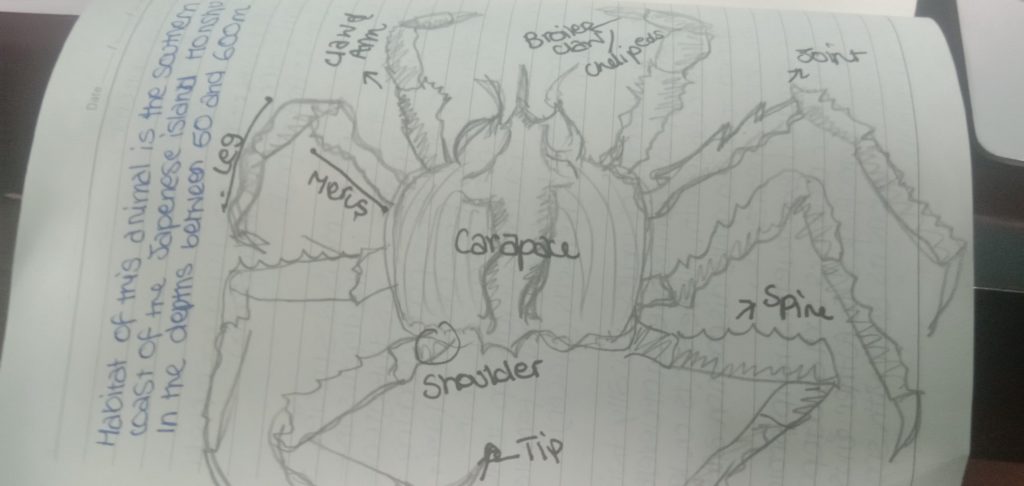
Gaint Oar Fish
Why must these cryptids I have talked about be so sinister-looking and ferocious? Let’s write about something more magical and pink cotton candy-ish.
I don’t know if this Gaint Sea Serpent fits that description for y’all. Although, the Oarfish for me definitely does.
This beautiful creature is the largest bony fish. It has an iridescent silver light-reflecting against its scaleless skin. Its skin is lIke coins strung together intricately, and a brilliant red crown on its head. The small spine has 4oo fin rays. Something so adorning seemed to have begun the myth of the horrid ‘sea serpent/ monster’ originally. The Oar Fish is another beauty of the Twilight zone, hidden in depths. They reside in tropical seas and have big eyes for the low light conditions.
Scientific name: Regalecus glesne
Length: 10 feet-50 feet
Phylum: Chordata
The Oarfish uses an interesting method of swimming called amiiform in which it is undulating its dorsal fin and keeping its body straight. It swims perpendicular mostly with the ribbon-like body, a true dwindling beauty to spot. Its pelvic fin is beneath it, red and elongated, and above it are the big eyes and the smallmouth with no distinctive teeth. The Oarfish mainly eats crustaceans, squids and plankton. In addition, its predators include sharks. Humans do not fish it as its skin is thought to be inedible.
There is not much known about its reproductive habits; it is presumed they do not guard their eggs after birth. The tiny, vibrant eggs are placed in the zooplankton and soon develop to larvae. They seem to be gentle and solitary fish by the divers who have spotted them.
Not much is known about this exquisite creature, and that is what entices me. It is a gentle and vibrant floating enigma, just like a fairytale.
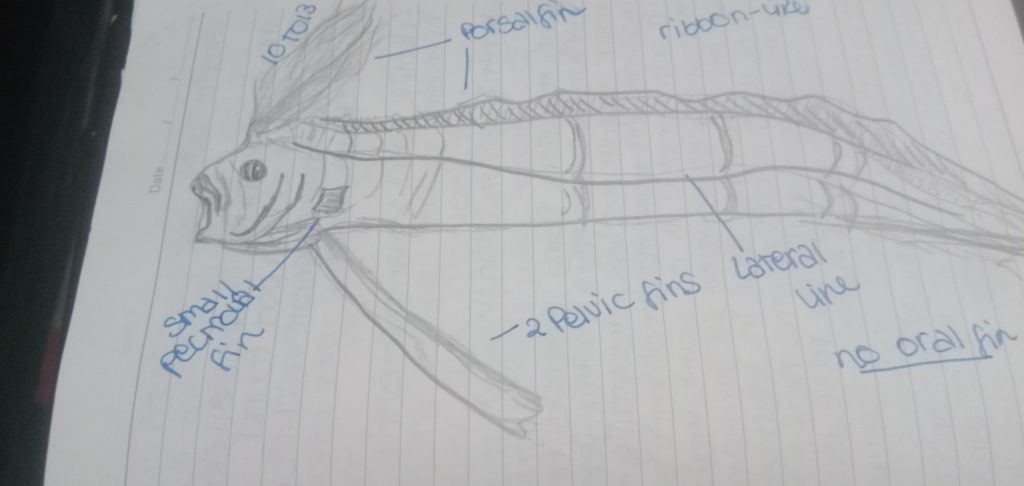
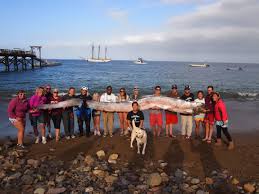
Gaint Isopod
coming soon…
Sargun
Help yourself to the knowledge that might pang once you dive down in the depths. Go enlighten yourself with the taste of the salty sea, here you might actually find what it is capable of and what it contains.
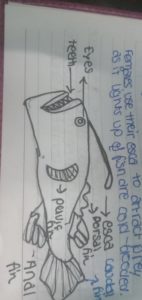

7 Comments
You-Know-Who
Amazing writing and very interesting information. I love how this piece is in reference to the endeavours of Captain Jack Sparrow. Great work
Sargun
thanks alot!
AffiliateLabz
Great content! Super high-quality! Keep it up! 🙂
Sargun
thanks alot
PornDodo
You’re great. Learn from you!
Sargun
thanks alot
PornDodo
May the world be free from disease